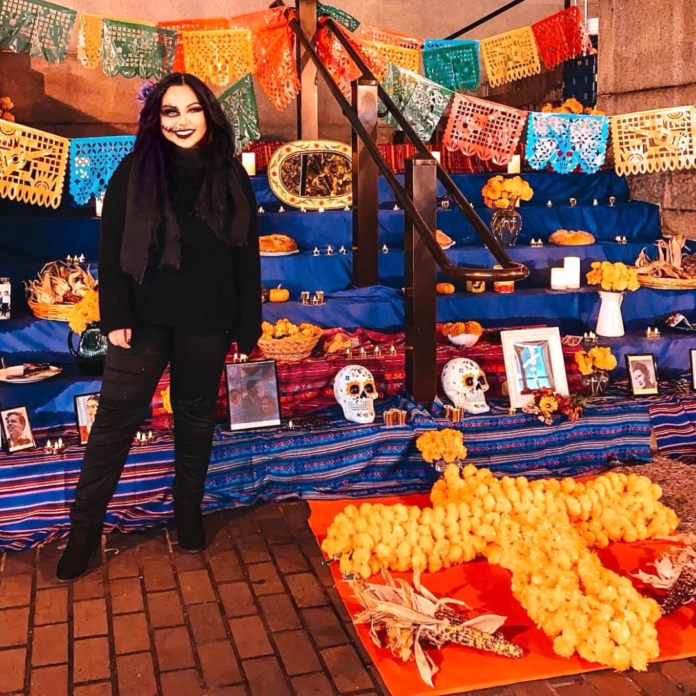Dia de los Muertos or Day of the Dead, is a widely celebrated cultural holiday from November 1-2. However, preparations are made from Oct. 27 onward.
Predominantly celebrated in Mexico, its origins trace back to pre-Christian culture.
While Dia de los Muertos is not a Catholic celebration, it is largely honored by Latin American culture and intertwines with core Catholic beliefs, as well as the feasts of All Souls’ Day and All Saints’ Day.
Annual celebrations involve creating “ofrendas” or altars with photos of loved ones who have passed, marigold flowers, and traditional foods such as “pan de muerte.”
Each act of placing an item on the altar is symbolic and special.
Those who celebrate these traditions typically wear skeletal face makeup, gather in a cemetery or procession, clean and decorate the graves of loved ones, and visit celebratory displays.
Though remembering those we have lost can be sombering, Dia de los Muertos is a typically joyous celebration, as its core belief is that our loved ones are visiting.
Day of the Dead is divided into two distinct days – the first being Dia de los Angelitos on Nov. 1, which is dedicated to children who have died, and Dia de los Muertos on Nov. 2 which is the actual day of the dead.
In recent years, schools and church parishes have participated in such celebrations with altar displays. Typically, the school or parish invites their community to add a photo of their loved one to be remembered and prayed for.
Being raised in a Catholic household, with my grandparents passing on so many beloved cultural and religious traditions, I was always taught to pray for the souls in purgatory.
At a very young age, my grandparents explained to me the beauty of death, what it means for our faith as Catholics, and our hope to see the beatific vision.
Death was never something to be feared in my household, but something definite–a necessary path for Heaven.
After all, our Savior died so that we may live in complete fullness with Him. Death was not meant to be something scary.
My grandparents explained that remembering our loved ones was much more than sharing funny anecdotes. It was still a call to love.
What more of a loving action can you take for your departed family and friends than praying for their souls?
Christina Herrera’s altar for Dia de los Muertos, 2018.
Though these two days of celebration can be seen as controversial or incompatible with our Catholic doctrine, I urge you to take a different approach.
Instead of displaying an altar with non-religious sentiment or participating in rituals that would alienate us from our Catholic faith, dedicate a special space to honor your deceased loved ones.
Create a table or altar filled with photos, flowers, candles, rosaries, and even a crucifix to remember our Lord’s promises. Remind yourself of the joy and beauty our beloved dead brought us throughout their lives.
Even though our loved ones are no longer physically present, our call to love them has not changed. Remembering the dead during this cultural celebration so wonderfully points to our two Catholic feast days.
The Communion of Saints, whom we speak of during the Apostles Creed, connects us all in the Eucharist and unites us as one body, one Church. Though we may be physically separated, this spiritual solidarity so beautifully unites the faithful on Earth, the souls in purgatory, and the saints in Heaven.
As a Mexican Catholic, with a deep appreciation for my culture and a deep love for my faith, I am joyfully reminded of the beauty in each.
How wonderful it is to honor those who have gone before us while being a walking example of our Catholic faith.
So as the faithful on Earth, we pray for the souls in purgatory who have not yet reached Heaven, especially those who have no one to pray for them, and we take joy in knowing the saints in Heaven intercede and pray for us.
This Dia de los Muertos, take the time to remember your loved ones, pray for their souls to reach the beatific vision, and pray that one day we may see it too.
Eternal rest grant unto them, O Lord. And let the perpetual light shine upon them. And may the souls of all the faithful departed, through the mercy of God, rest in peace. Amen.



